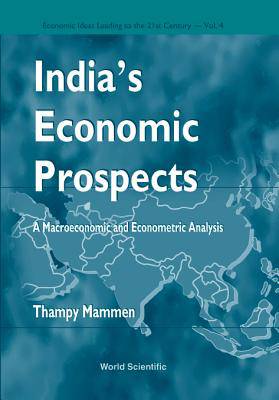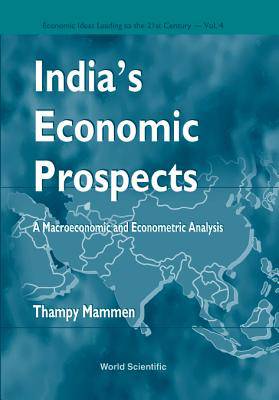
Door een staking bij bpost kan je online bestelling op dit moment iets langer onderweg zijn dan voorzien. Dringend iets nodig? Onze winkels ontvangen jou met open armen!
- Afhalen na 1 uur in een winkel met voorraad
- Gratis thuislevering in België vanaf € 30
- Ruim aanbod met 7 miljoen producten
Door een staking bij bpost kan je online bestelling op dit moment iets langer onderweg zijn dan voorzien. Dringend iets nodig? Onze winkels ontvangen jou met open armen!
- Afhalen na 1 uur in een winkel met voorraad
- Gratis thuislevering in België vanaf € 30
- Ruim aanbod met 7 miljoen producten
Zoeken
India's Economic Prospects - A Macroeconomic and Econometric Analysis
Thampy Mammen
€ 88,45
+ 176 punten
Omschrijving
This book provides a macroeconomic analysis of the Indian economy. It is a long-run study that spans the period from 1950-51 to 1992-93, encompassing the various turning points in India's economic policy and development strategies. The macroeconometric model used in the book integrates the monetary and real sectors of the economy. In order to provide theoretical underpinnings for the model, the book traces the development of macroeconomic theory including Keynesian, structuralist, and supply-side economics. The model explains the public sector's current and capital expenditures, rather than treating them as exogenous variables. A sub-recursive system of prices is formulated in terms of unit cost based on the flow of factor income generated in the process of production, monetary variable, and agriculture supply factors.The model analyzes and evaluates policy changes in India, particularly since 1984. It is used to derive the appropriate mix of fiscal, monetary, and trade policies needed to generate significant economic growth in 1997-2000 in a non-inflationary environment. While fiscal and monetary discipline is vital in this regard, public-sector investment plays an important role in capital formation and economic growth.
Specificaties
Betrokkenen
- Auteur(s):
- Uitgeverij:
Inhoud
- Aantal bladzijden:
- 380
- Taal:
- Engels
- Reeks:
- Reeksnummer:
- nr. 4
Eigenschappen
- Productcode (EAN):
- 9789810232337
- Verschijningsdatum:
- 21/09/1999
- Uitvoering:
- Hardcover
- Formaat:
- Genaaid
- Afmetingen:
- 230 mm x 161 mm
- Gewicht:
- 662 g

Alleen bij Standaard Boekhandel
+ 176 punten op je klantenkaart van Standaard Boekhandel
Beoordelingen
We publiceren alleen reviews die voldoen aan de voorwaarden voor reviews. Bekijk onze voorwaarden voor reviews.











